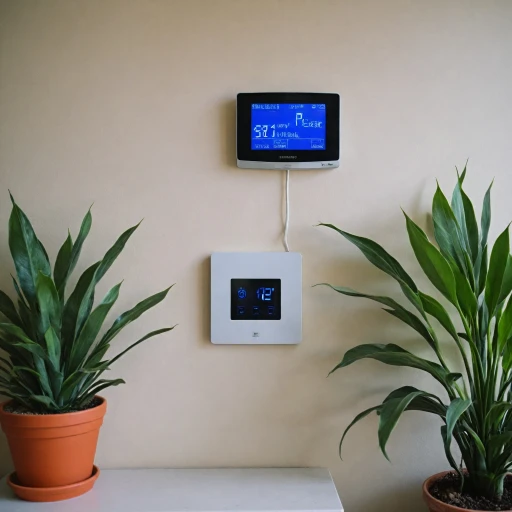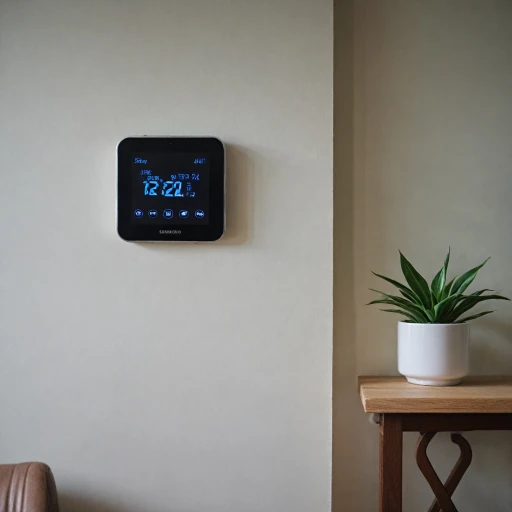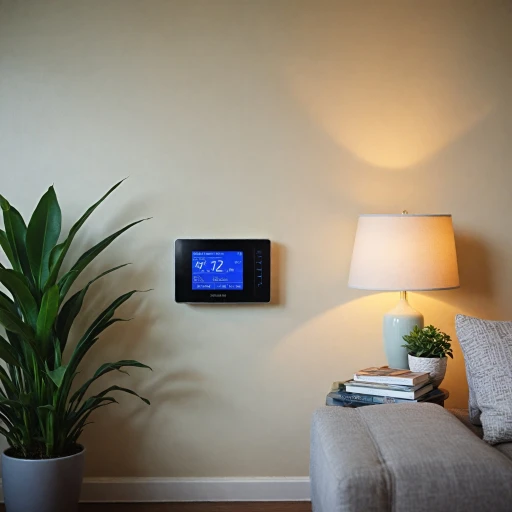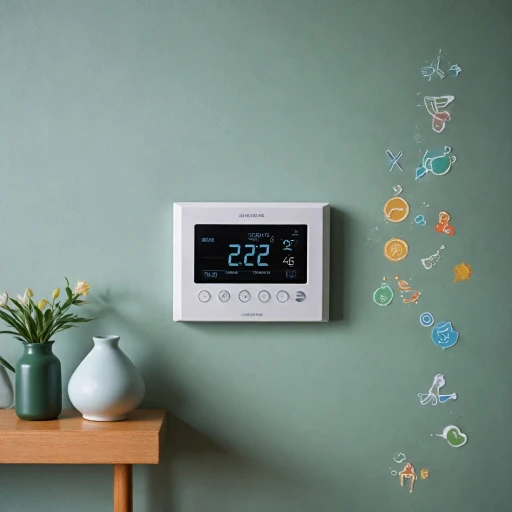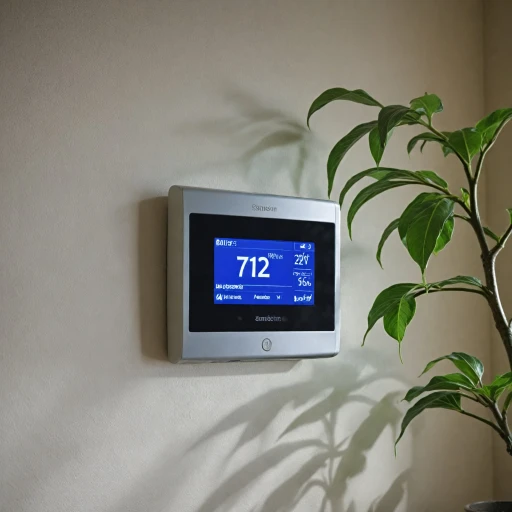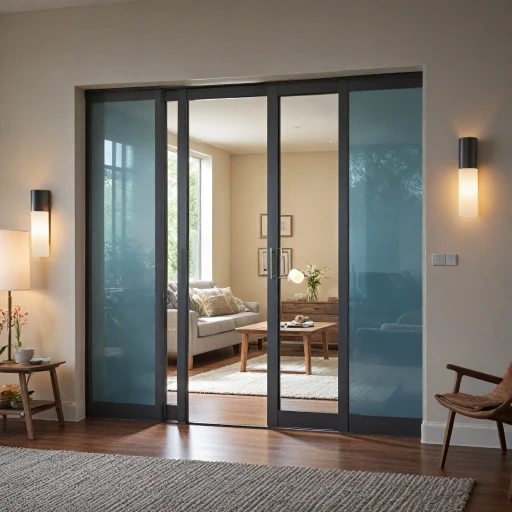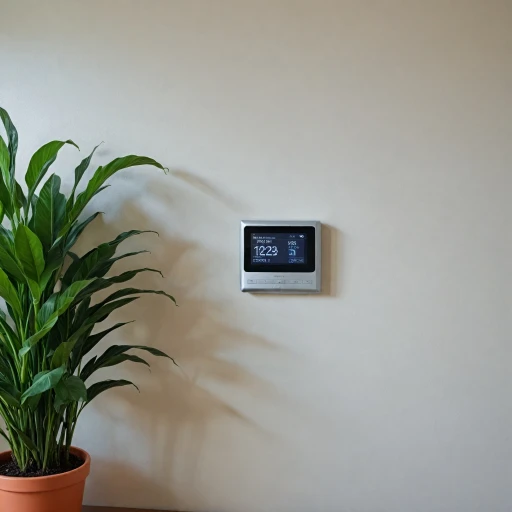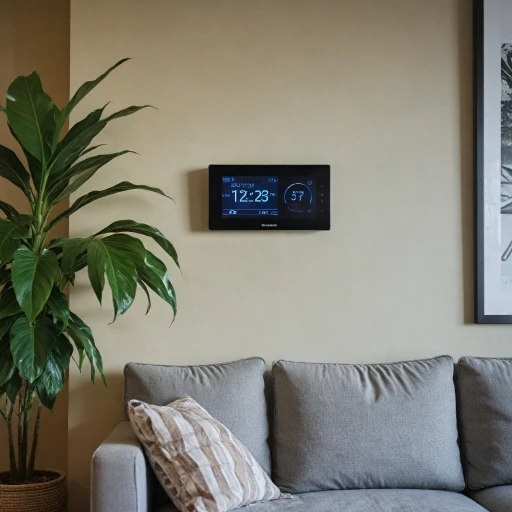
The Basics of Smart Thermostats
Exploring the Foundation of Smart Thermostats
Smart thermostats are revolutionizing the way we manage home comfort and energy efficiency. These devices go beyond traditional thermostats by incorporating advanced technologies that allow for seamless control and customization. Equipped with connectivity options, smart thermostats enable homeowners to regulate their home climate using smartphones or other smart devices, making it convenient to adjust settings remotely. Key features that define a smart thermostat include:- Connectivity and Integration: Most smart thermostats connect to Wi-Fi, allowing users to control them through an app or voice commands via smart home hubs like Amazon Echo or Google Home.
- Remote Temperature Control: Adjust your home's temperature from anywhere, preventing energy wastage and ensuring comfort upon your arrival.
- Energy Usage Insights: Many models provide detailed reports and recommendations on energy consumption, enabling users to make informed decisions about their heating and cooling habits.
- Learning Capabilities: Some smart thermostats have the ability to learn your schedule and preferences, automatically adjusting settings for efficiency.
What is a Z-Wave Motion Sensor?
Understanding Z-Wave Motion Sensors
Z-Wave motion sensors are an integral part of the smart home ecosystem, offering a seamless way to enhance the functionality of smart thermostats. These sensors operate using the Z-Wave protocol, a wireless communication method specifically designed for home automation. Unlike Wi-Fi, Z-Wave is known for its low power consumption and long-range capabilities, making it ideal for battery-operated devices.
These sensors detect motion by sensing changes in infrared light, which is emitted by objects in their field of view. When a person enters a room, the sensor detects the motion and sends a signal to the connected smart thermostat. This interaction allows the thermostat to adjust the temperature based on occupancy, optimizing energy use and enhancing comfort.
In addition to motion detection, some Z-Wave sensors can also monitor other environmental factors such as light levels and even water leaks. This versatility makes them a valuable component in a comprehensive smart home setup. Devices like the Ecolink Wave sensor and the Sensor Gen series are popular choices due to their reliability and ease of integration.
When considering the price of Z-Wave motion sensors, it's important to note that the unit price can vary based on features and brand. While some may be available at a regular price, others might be found at a sale price, offering a cost-effective way to enhance your home's smart capabilities. For those interested in a broader range of smart home solutions, exploring options like the Mitsubishi mini-split thermostat can provide additional insights into enhancing home comfort.
Overall, integrating Z-Wave motion sensors with smart thermostats not only provides better control over your home's climate but also contributes to energy savings and improved security. As you delve deeper into the world of smart thermostats, understanding the role of these sensors will be crucial in making informed decisions.
Integrating Z-Wave Motion Sensors with Smart Thermostats
Combining Smart Thermostats with Z-Wave Motion Sensors
The integration of Z-Wave motion sensors into smart thermostats introduces a new layer of intelligence and efficiency in managing home climate systems. Z-Wave sensors, known for their long-range and energy-efficient protocols, work by detecting motion and communicating with the smart thermostat to adjust the temperature based on occupancy and activity levels. When a Z-Wave sensor detects movement in a room, it sends a signal to the smart thermostat, prompting it to either activate the HVAC system or make suitable adjustments. This means that when a room is vacated for a certain period, the motion sensor alerts the thermostat to conserve energy by adjusting the temperature. Conversely, if the sensor picks up activity, it signals the device to optimize the temperature for comfort. Integrating Z-Wave sensors with smart thermostats involves:- Connecting via a Hub: Most smart homes require a central hub to facilitate communication between devices. The hub serves as a command unit, allowing seamless control of Z-Wave-enabled devices like motion sensors and smart thermostats.
- Strategic Placement: To maximize efficiency, Z-Wave motion detectors should be installed in key locations, such as hallways, near light switches, or doorways. This ensures reliable sensing of movement throughout different parts of the home.
- Battery and Power Considerations: Z-Wave motion sensors are typically battery-powered. Monitoring battery levels ensures consistent performance. Some models may offer low battery alerts, so users should remain attentive to avoid lapses in functionality.
- Compatibility Checks: It's vital to verify that the Z-Wave motion sensor is compatible with the specific series of the smart thermostat. Brands like Ecolink offer sensors that are often part of broader smart home systems, ensuring broader compatibility.
Benefits of Using Z-Wave Motion Sensors
Advantages of Employing Z-Wave Motion Sensors in Smart Thermostats
Integrating Z-Wave motion sensors with smart thermostats brings a plethora of advantages that elevate the functionality and efficiency of home automation systems.- Energy Efficiency: Utilizing Z-Wave motion detectors in conjunction with smart thermostats can significantly enhance energy savings. By detecting movement, the thermostat can adjust the temperature settings according to current occupancy, ensuring that energy is not wasted when spaces are unoccupied.
- Enhanced Comfort: These motion devices contribute to creating a consistently comfortable environment by tailoring the indoor climate to real-time activity. The wave sensors adjust the room settings based on human presence, providing an optimal atmosphere without manual intervention.
- Seamless Integration with Other Smart Devices: The Z-Wave sensor’s compatibility with a wide range of smart devices, including lights, doors, and security systems, allows for an integrated approach to home automation. This interconnectivity streamlines operations, making it convenient to manage different units from a single hub.
- Increased Security: Motion sensors like the sensor ecolink series and wave motion detectors add an extra layer of security to your smart home ecosystem. They can alert you to unexpected activity when the home should be vacant and work alongside door and window mechanisms, providing a cohesive security strategy.
- Cost-Effectiveness: Although the initial unit price might vary from the regular price to sale price, the long-term savings on energy bills contribute to its overall cost-effectiveness. Devices such as the Ecolink wave and Zigbee versions are available across a variety of price points, ensuring there's a suitable option for every budget.
Challenges and Considerations
Potential Hurdles When Using Z-Wave Motion Sensors
Integrating Z-Wave motion sensors with smart thermostats offers a wave of advantages, but it isn’t without its set of challenges and considerations. Here are some key aspects to keep in mind:- Compatibility and Connectivity: Not all smart devices and hubs operate seamlessly together. While Z-Wave sensors are known for their robust performance, ensuring compatibility between your smart thermostat and these sensors is crucial. You might encounter connectivity issues if the devices aren’t from the same generation or if they don’t support the same communication protocols like Zigbee or Ecolink Wave.
- Battery Life and Maintenance: Though convenient, battery-powered motion sensors require regular upkeep. It’s essential to monitor the battery life to prevent the sensors from failing unexpectedly, especially in critical areas like water leak detection or garage door monitoring.
- Integration Complexity: While integrating a Z-Wave motion detector can enhance security and control, it requires a certain level of technical expertise. Configuring these units may involve setting up multiple components, including the smart thermostat, hub, and sensor devices like light switches and door windows. Ensuring smooth communication across these components can be intricate, especially for the non-tech-savvy user.
- Cost Considerations: Beyond the regular price of the smart thermostat and motion sensors, additional costs may arise from seeking professional help for setup, or in purchasing compatible devices. The price, sale offers, and budget constraints should be carefully evaluated to determine if the benefits outweigh the expenses.
- Security Concerns: With any connected device, security is always a valid concern. While Z-Wave sensors don’t rely on Wi-Fi, ensuring they are part of a secure network and understanding how data is handled by the device and hub can help mitigate potential risks.
Future Trends in Smart Thermostat Technology
Emerging Innovations in Smart Thermostat Technology
The future of smart thermostat technology promises exciting developments, driven by advancements across various domains. As we delve into emerging trends, several key areas paint a promising picture for smart home enthusiasts and tech adopters.- Integration with Advanced Sensors: As discussed earlier, smart thermostats are increasingly integrating with Z-Wave motion sensors to enhance functionality. But this is just the beginning. Future devices may incorporate a variety of sensors — from water leak to door window and garage door sensors — offering comprehensive home automation solutions.
- Expansion of Control Options: The need for sophisticated control mechanisms is growing. Smart thermostats are expected to offer enhanced compatibility with light switches, doors, and other smart devices, employing both Z-Wave and Zigbee technologies to broaden their ecosystem of interconnected devices.
- Battery and Power Innovations: Traditional power units are being reimagined. Expect to see longer battery life and more energy-efficient designs that empower devices to operate smoothly without frequent maintenance or replacement.
- Affordability and Accessibility: As smart technology evolves, so does its accessibility. With a focus on competitive pricing strategies, including unit prices and sale prices, smart thermostats are becoming more accessible to a wider audience, opening the doorway to advanced home automation for everyone.
- Enhanced Security Measures: Security remains paramount, guiding manufacturers to innovate security features within smart devices. With Ecolink's series of Z-Wave sensors and other gen sensor innovations, future thermostats are projected to bolster security, reassuring users of their devices' integrity.
- Long Range and Versatile Connections: The future holds significant promise in extending range capabilities, facilitating seamless connections between devices across larger spaces. This includes long-range wave sensors that ensure reliable communication, even in expansive homes.

